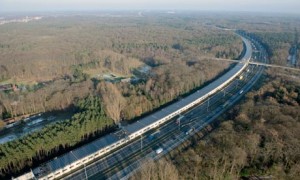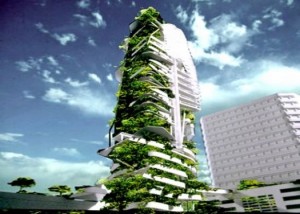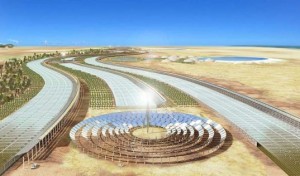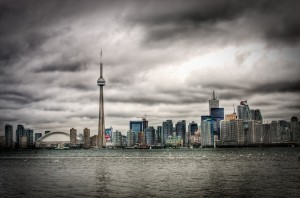 A two-mile-long Belgian rail tunnel, built to shelter trains from falling trees, will from Monday provide a double environmental benefit by hosting a unique solar power project. The high-speed line running from Paris to Amsterdam passes Antwerp and a nearby ancient forest. To avoid the need to fell protected trees, a long tunnel was built over the line which has now been topped with 16,000 solar panels. The electricity produced is equivalent to that needed to power all the trains in Belgium for one day per year, and will also help power Antwerp station.
A two-mile-long Belgian rail tunnel, built to shelter trains from falling trees, will from Monday provide a double environmental benefit by hosting a unique solar power project. The high-speed line running from Paris to Amsterdam passes Antwerp and a nearby ancient forest. To avoid the need to fell protected trees, a long tunnel was built over the line which has now been topped with 16,000 solar panels. The electricity produced is equivalent to that needed to power all the trains in Belgium for one day per year, and will also help power Antwerp station.
“For train operators, it is the perfect way to cut their carbon footprints because you can use spaces that have no other economic value and the projects can be delivered within a year because they don’t attract the protests that wind power does,” said Bart Van Renterghem, UK head of Belgian renewable energy company Enfinity, which installed the panels. “We had a couple of projects lined up around London with train operators and water utilities, but they have been put on hold.”
Van Renterghem said this was due to the UK government’s controversial review of subsidies for large-scale solar power projects, which will lower the returns available. The UK government argues that solar technology is too expensive, but Van Renterghem said he had seen the cost of cells halve in the last two to three years thanks to economies of scale in Germany, France and Belgium. The new  Blackfriars station in London, which will span the River Thames, will host the largest single collection of solar panels in the UK when it opens in spring 2012. The roof of the new station will have 4,400 panels and a capacity of 1MW, enough to provide 50% of the station’s electricity. However, the development is not dependent on the level of government subsidy for solar power as the £7.3m bill was paid by the transport department’s environment fund. Source: Business Green
Blackfriars station in London, which will span the River Thames, will host the largest single collection of solar panels in the UK when it opens in spring 2012. The roof of the new station will have 4,400 panels and a capacity of 1MW, enough to provide 50% of the station’s electricity. However, the development is not dependent on the level of government subsidy for solar power as the £7.3m bill was paid by the transport department’s environment fund. Source: Business Green
THE SOLAR TRAIN STATION
Seeing Green: The Value of Urban Farms













